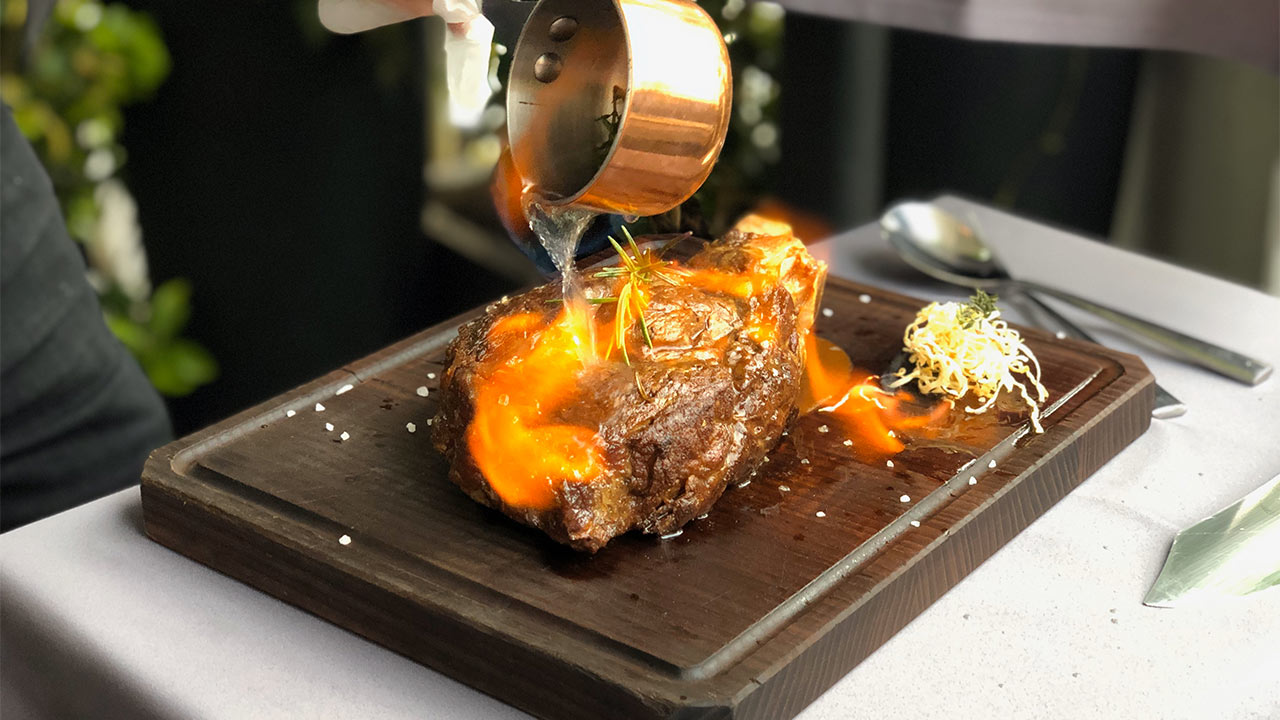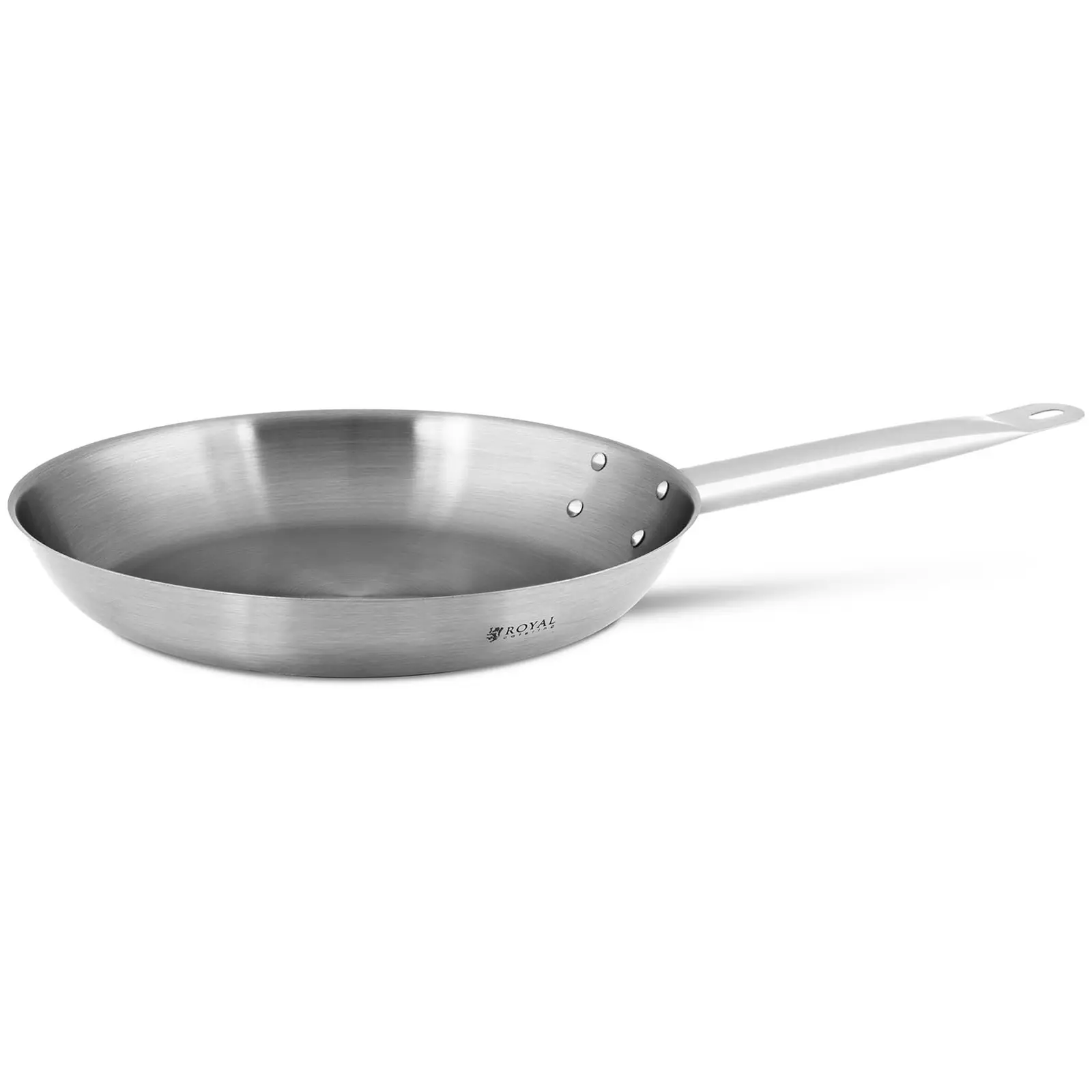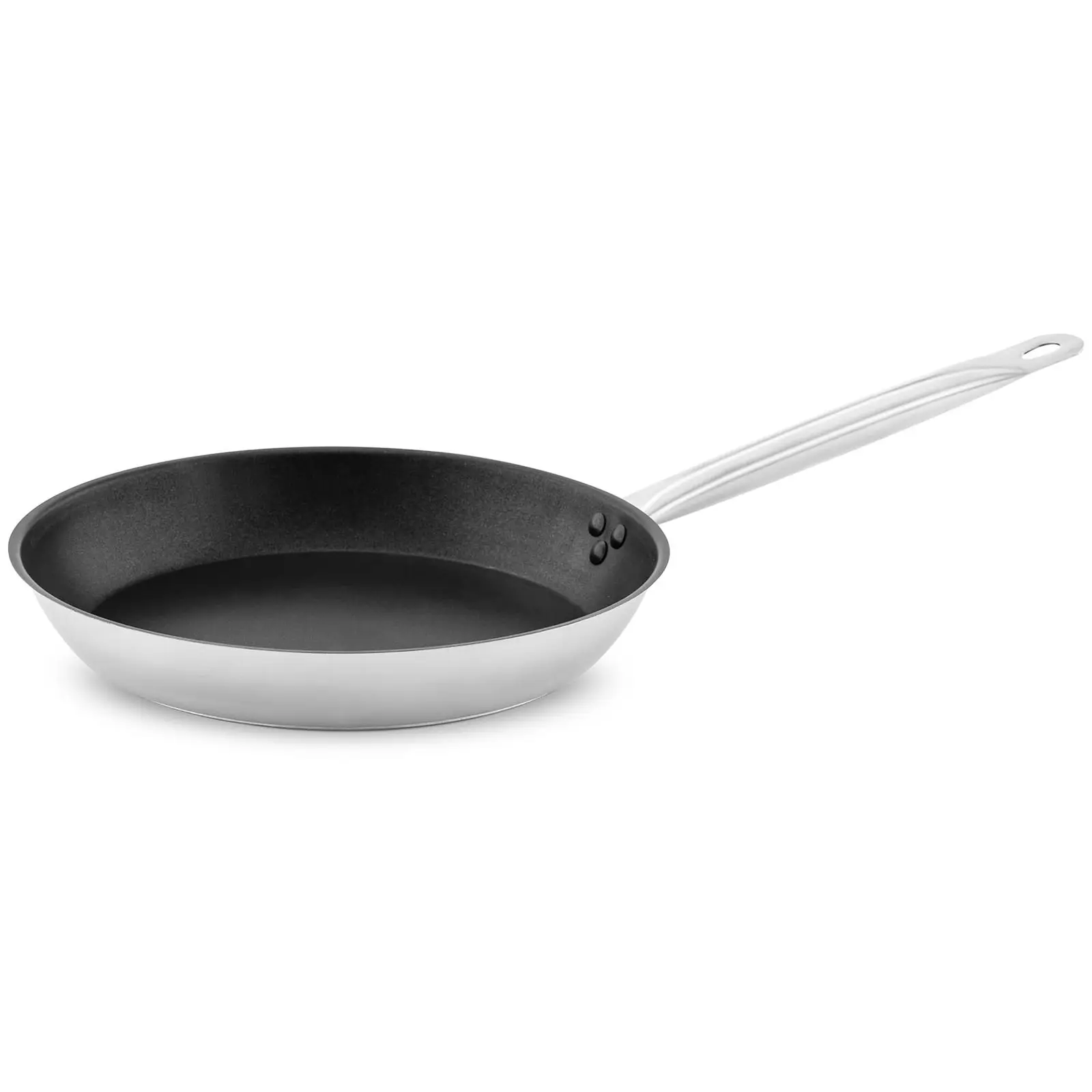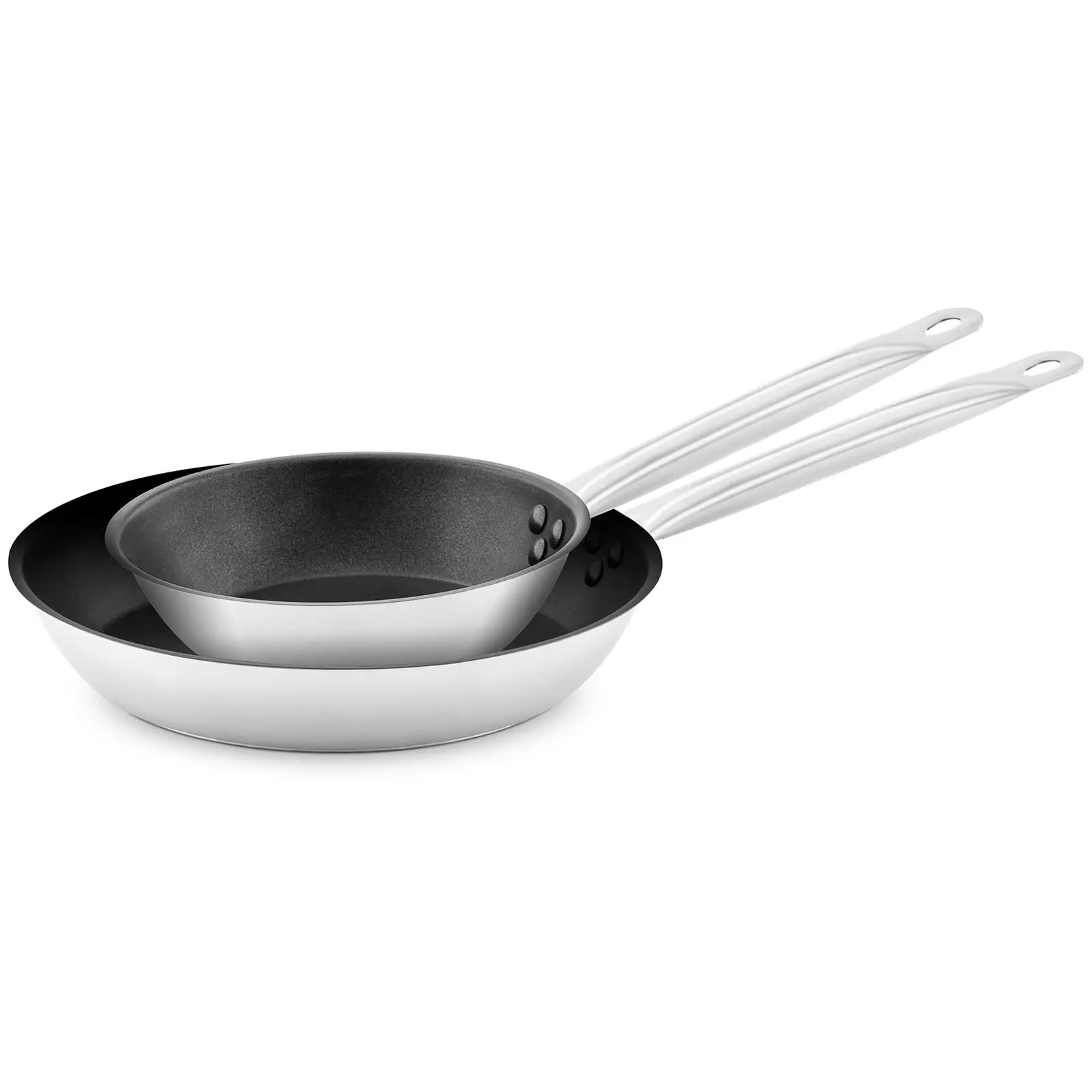If you want to serve your guests with not only delicious food, but also an unforgettable show, then flambéing could be a great idea. Add a bit of adrenaline to your lunch or dinner. What is flambéing and how should you prepare for it? Read this article to find out.

If you want to serve your guests with not only delicious food, but also an unforgettable show, then flambéing could be a great idea. Add a bit of adrenaline to your lunch or dinner. What is flambéing and how should you prepare for it? Read this article to find out.
What is flambéing?
The name “flambéing” comes from the French “flambé” and means “arson”, which perfectly reflects the nature of this culinary technique. It involves setting fire to strong spirits poured onto the food being prepared. It is sometimes also called a burning platter.
What does flambéing do? First of all you get rid of the bitter taste of alcohol, but leave the aroma of the chosen beverage. Additionally, due to the fact that you are dealing with flames, the temperature on the surface of the food also increases. It caramelises sugar, which enhances the taste and makes the dish turn brown. Another advantage is that it looks pretty spectacular. A cook with a frying pan full of flames or a waiter setting a dish on fire is an impressive sight in any restaurant.
What alcohol can be used for flambéing?
The most important element of flambéing is choosing the right alcohol. Since it acts as fuel for the flames, you should know which drink to choose. First of all, check the ethanol content. Alcoholic beverages with 40-60%, such as whiskey, cognac or rum work best. The alcohol in beer, wine or champagne is not enough to be set on fire. Alcoholic beverages with an alcohol content over 60% are too flammable, and therefore dangerous, and under no circumstances should they be used for flambéing.
Matching the taste of alcohol to the dish is also important. You wouldn’t use the same liquor for desserts and game. So how can you get it right? Here are some tips:
- Cognac – seafood, e.g. prawns
- Rum – fruit e.g. bananas or peaches
- Whisky – steaks
- Brandy – poultry
- Gin – game
In the case of fruit alcohols, they are usually used in desserts made of the same fruit, e.g. you would use cherry vodka for desserts with cherries. However, there are exceptions, such as flambéing smoked meat with Slivovitz.
How to flambé food?
Before making a flambé dish, make sure you have all the ingredients and utensils within reach. This technique requires quick a reaction and careful attention. After all, you’ll be playing with fire. You will need a high-quality stainless steel or cast iron frying pan on which to fry the dish, a high-sided saucepan to heat the alcohol, long tongs, a spoon or fork to turn over and serve the dish, a metal lid and a long match or lighter to set fire to the alcohol. You can also use uncooked spaghetti as ignition. More experienced chefs might also use the fire on a kitchen stove as ignition.
The alcohol should be heated until bubbles appear. Ethanol is then released, which is flammable. Too cold drinks will be impossible to ignite. On the other hand, you mustn’t bring the liquid to a boil, because all the alcohol will evaporate instantly and your efforts will be futile. When the alcohol reaches the right temperature, pour it into the pan with the food. In the interest of safety, take the dish off the heat before you pour in the contents of the saucepan. This way you will avoid accidentally causing a fire.
Mix everything gently, then carefully tilt the pan and form a small pool. This will make it easier to ignite the fumes using a match. Proper flambéing takes approx. 30 seconds, and you can use a metal lid to put out the flames. The ethanol burnout time depends on how strong the alcohol is and the desired effect. If you want a stronger flavour, finish the flambéing quicker. If you want to totally get rid of the alcohol then wait for the fire to go out itself. Serve the ready dish immediately after cooking.
How to flambé safely
Some restaurants serve dishes set on fire by the waiter, not the chef. Before adding flambéing to your menu, consider a few safety rules:
- The waiter should not leave the kitchen with a dish already set on fire. The alcohol is still in liquid form, so even a small distraction could lead to spilling and cause a fire.
- Remove all flammable decorations that could cause a fire.
- Under no circumstances should the waiter pour the heated alcohol directly from the bottle. Uncontrolled ignition of the fumes could cause the dish to explode.
- The waiter should have a metal cover within easy reach in case they need to suddenly put out the flames.
Remember that experience in serving such dishes is important, so proper training of your team before deciding to serve flambéed food is vital.
The most popular flambé dishes
The list of recipes that use this technique is very long. You will find both fruit desserts and savoury meat dishes, as well as exotic seafood. Here are some of the most popular examples served in the best restaurants:
- Foster Bananas – a flagship flambé dessert. The recipe originated in the New Orleans and is based on fried bananas, rum, cinnamon, brown sugar and vanilla ice cream. Some people also add some banana liqueur.
- Crêpes suzette – flaming pancakes in an orange sauce. This is French cuisine. Brandy and orange liqueur are used to flambé the pancakes, which leave a subtle taste.
- Christmas Pudding – the classic Christmas dessert. Full of dried fruit, gingerbread spices and heavy dough soaked and drenched in rum, brandy or whisky (some recipes include all three).
- Diane steak – fried venison steak in a sauce based on ingredients that remained in the pan after frying meat. Brandy is the most commonly used alcohol for this dish. There are different ways of preparing it. Some chefs flambé glazed onions in order to caramelise them, while others prefer to do it together with the meat in the final stage of cooking. The final effect tastes differently every time.
- Coq Au Vin – chicken stewed in wine with cracklings of smoked bacon and mushrooms. To add the special flavour, the meat and sauce are flambéed with cognac, brandy or whisky.
When discussing the most popular flambéed dishes on a restaurant menu, you cannot forget about drinks. This can be a highlight of many events, such as hen and stag parties or New Year’s Eve balls. This is why many bartenders learn how to prepare such drinks. The technique requires the addition of a thin layer of strong alcohol just before being served. A perfect example is the B52 cocktail served in a shot glass and made with coffee and fruit liqueurs, cream and whiskey. A few drops of rum are put on top, allowing you to set it on fire. You can use a straw to drink this flambéed cocktail, or you could also blow out the fire and tilt the glass immediately. Attempting to drink a burning shot could result in accidental spilling, as well as skin burn.
Summary
As you now know, flambéing is not a very complicated technique but it requires some practice if you want to permanently include such dishes in your menu or dream of impressing your friends at dinner. Practice makes perfect, so practice at home and you should then be ready to amaze everyone with a spectacular culinary performance.










Share